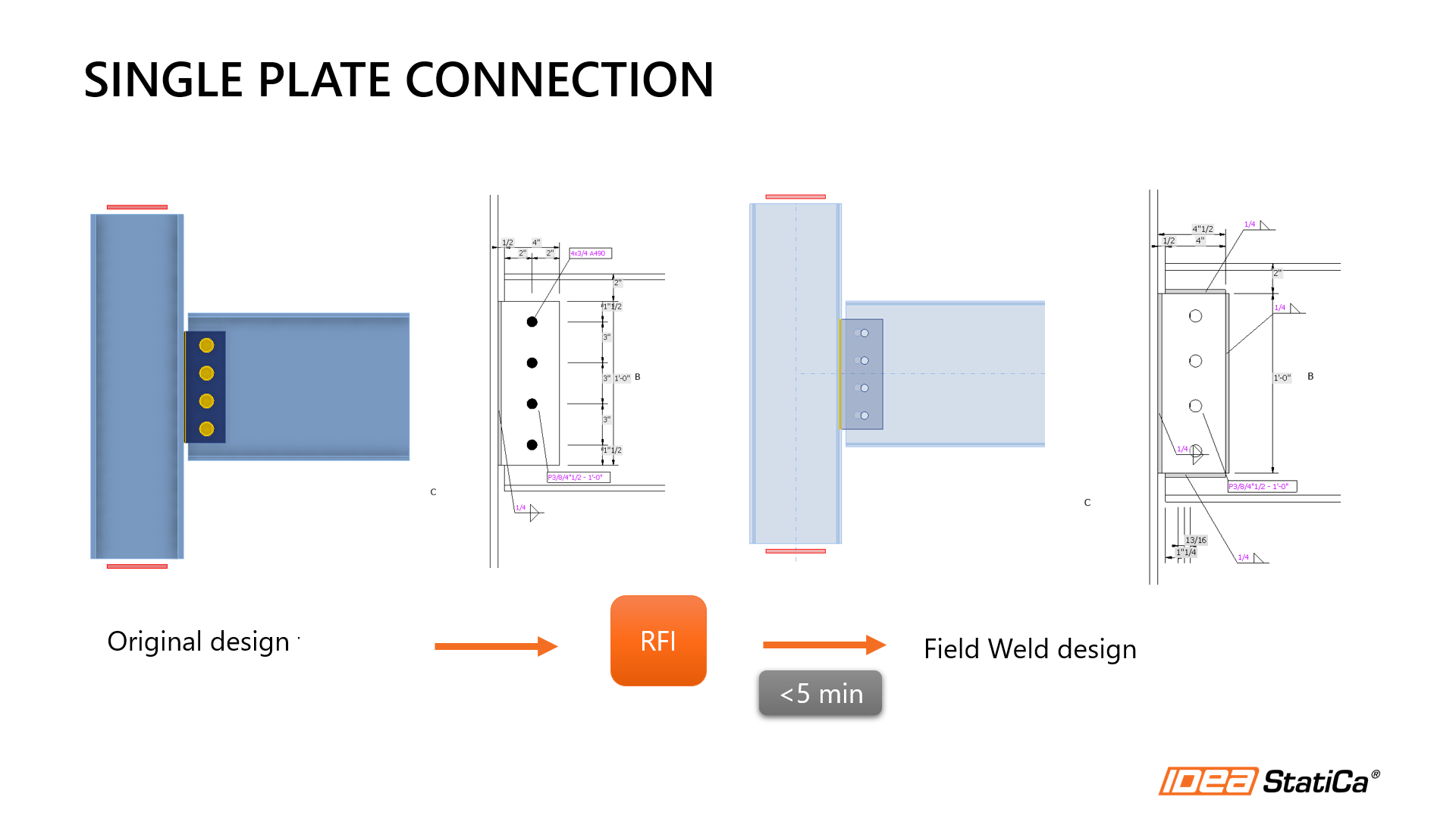Connection Design RFIs – Revising a bolted shear tab to a welded shear tab
This article is a part of a series "Connection Design RFIs."
Read all articles in the series.
Shear tab–what's the issue?
Single-plate shear connections are among the most used connections in every steel structure for many reasons: easy to calculate, fabricate, and construct. To ease the calculation of shear tabs, AISC introduced a step-by-step design procedure in the Steel Construction Manual since version 13. Chapter 10 includes design aids for single plate shear tabs, providing the appropriate configuration based on the required design shear force.
While these aids are an easy and quick approach, the tables will only cover conventional designs. During fabrication and construction, many design changes are requested due to:
- Misaligned holes in the beam or shear tab
- Notches in beams
- Limited access to install bolts
In such cases, RFIs are submitted to the Engineer of Record to reassess the shear connection. For instance, changing the bolted connection to a welded one (see some pictures here) or reviewing the member for openings near the connection, such as a larger notch on the beams.
How IDEA StatiCa can help with shear tabs
With IDEA StatiCa, these adjustments can be made in less than five minutes, helping to avoid delays in the construction schedule that usually result from the design changes.
IDEA StatiCa offers manufacturing operations to model connections, allowing you to easily transition from a bolted to a welded connection for single shear tabs, double angles, end plates, etc.
Usually, changing the type of connection does not cause issues. However, some checks, such as ductility, are overlooked during these changes. Shear connections are meant to be pinned joints, which means they can rotate freely.
When changing from bolted to welded you are creating a stronger connection that will prevent some rotation on the member. As a consequence, the connection behaves as partially restrained, which we want to avoid since the connection was meant to remain pinned.
This modification is often overlooked, as calculating the rotational stiffness of a connection is quite time-consuming. However, with IDEA StatiCa, this analysis can be completed in minutes.
By running a stiffness analysis in IDEA StatiCa, you can quickly determine if your connection remains pinned and test other design solutions for the on-site change. IDEA StatiCa helps you to make informed decisions in much less time than traditional calculations.
Once you have decided on the final design, create a quick sketch of the changes and share a viewer link with the project manager so they can review the 3D model of the connection on-site via a mobile device!
Summary
When unexpected design in-field challenges arise, such as misaligned holes or limited bolt access in shear tabs, IDEA StatiCa offers a fast and reliable solution.
By allowing you to quickly remodel a bolted to a welded shear connection, perform stiffness analyses, and assess the impact on rotational behavior, IDEA StatiCa ensures your connections remain compliant and efficient. Moreover, with the ability to share 3D models for real-time review with the Viewer app, IDEA StatiCa not only speeds up decision-making but also keeps your construction project on track.
SIGN UP AND TRY FOR FREE
Explore the speed and power of IDEA StatiCa on your own. Give it a try for 14 days for free.
Do not forget also to sign up to our newsletter not to miss any important topic. As an bonus, you will receive a discount on the CBFEM verification book "Steel Connection Design by Inelastic Analysis."







